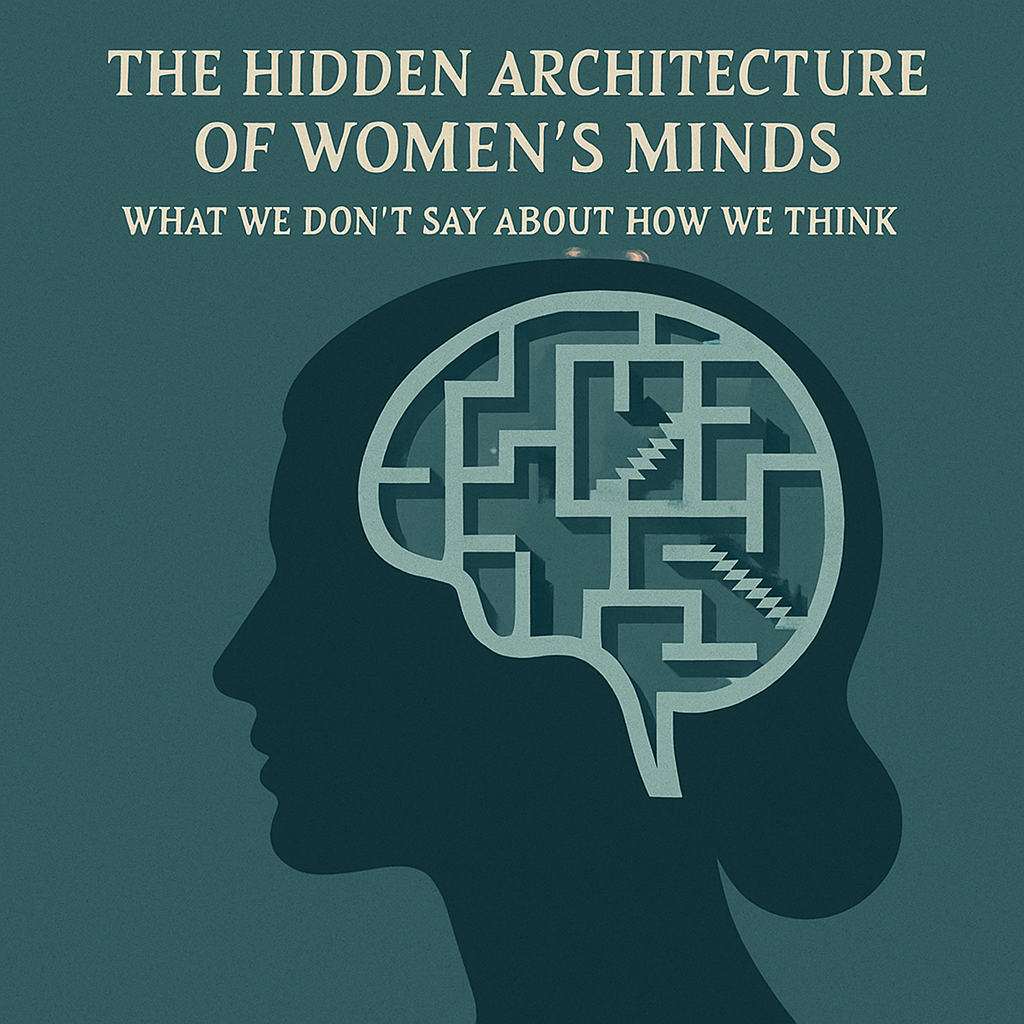The Psychology of Female Anger: Why Women’s Rage Gets Dismissed and How It Secretly Drives Success
Women’s anger isn’t a flaw to be fixed—it’s intelligence in action. Understanding why society fears feminine fury might just unlock your greatest source of power.
The Emotion We’re Not Allowed to Have
Picture this: A man raises his voice in a meeting, pounds his fist on the table, and demands better results from his team. He’s called “passionate,” “driven,” a “natural leader.”
Now imagine a woman doing exactly the same thing. The words that follow are different: “emotional,” “unstable,” “difficult to work with.”
This double standard isn’t just unfair—it’s psychologically devastating. According to research published in the Journal of Experimental Social Psychology, when women express anger in professional settings, they’re perceived as less competent and less worthy of leadership positions. Men expressing identical anger are seen as more competent and leadership-ready.
“Women’s anger is systematically devalued and pathologized in ways that men’s anger never is,” explains Dr. Soraya Chemaly, author of Rage Becomes Her. “This isn’t just about social comfort—it’s about power. When we dismiss women’s anger, we dismiss their right to have boundaries, expectations, and demands.”
But here’s what decades of psychological research reveal: women’s anger isn’t the problem society makes it out to be. In fact, it might be one of our most underutilized sources of strength, creativity, and social change.
The Hidden Intelligence of Female Fury
Contrary to the stereotype of anger as irrational emotion, neuroscience research shows that women’s anger is often highly sophisticated—more nuanced, more contextual, and more solution-oriented than male anger.
Dr. Lisa Feldman Barrett’s groundbreaking research at Northeastern University found that women typically experience what she calls “granular emotions”—they can distinguish between dozens of different types of anger with remarkable precision. While men might experience “mad,” women experience frustrated, indignant, resentful, livid, incensed, or betrayed.
“This emotional granularity isn’t just vocabulary,” explains Dr. Barrett. “It represents a more sophisticated emotional processing system. Women who can precisely identify their anger types are better at addressing the underlying causes and finding effective solutions.”
Brain imaging studies support this finding. When women experience anger, they show increased activity in the prefrontal cortex—the brain region responsible for complex reasoning and social intelligence. They’re not just feeling angry; they’re analyzing the situation, considering consequences, and strategizing responses.
This is why women’s anger often appears “complicated” to observers. It’s not pure rage—it’s rage plus analysis plus strategic thinking plus empathy for multiple perspectives, all happening simultaneously.
The Evolutionary Advantage of Female Anger
Evolutionary psychologists have discovered something fascinating: women’s anger may have evolved as a sophisticated survival mechanism, not just for themselves but for their communities.
Dr. Joyce Benenson’s research at Emmanuel College found that female anger tends to be more focused on injustice, resource allocation, and protection of vulnerable group members. While male anger often centers on individual status threats, female anger typically responds to systemic problems that affect multiple people.
“Women’s anger is fundamentally prosocial,” explains Dr. Benenson. “It’s oriented toward fixing problems that harm the group, not just advancing individual interests.”
This shows up in fascinating ways across cultures and contexts:
- Workplace studies show that women are more likely to express anger about unfair policies affecting others, while men are more likely to express anger about personal slights
- Historical analysis reveals that women-led social movements consistently focus on systemic change (suffrage, civil rights, environmental protection) rather than individual advancement
- Parenting research demonstrates that mothers’ anger is predominantly triggered by threats to their children’s wellbeing or future opportunities
“Women’s anger is often dismissed as ‘overreaction,’” notes Dr. Chemaly. “But when you examine what women are actually angry about—inequality, injustice, preventable harm—their anger appears not just justified but essential for social progress.”
The Physical Cost of Suppressed Rage
Perhaps the most striking research in this field concerns what happens when women suppress their anger to meet social expectations.
A 2018 study published in the Journal of Applied Psychology tracked 1,800 women over two decades, examining the relationship between anger expression and health outcomes. The results were sobering:
- Women who regularly suppressed anger showed 70% higher rates of cardiovascular disease
- Chronic anger suppression was linked to autoimmune disorders, chronic pain, and digestive issues
- Women who found “appropriate” ways to express anger showed significantly better physical health outcomes
“The body keeps score,” explains Dr. Gabor Maté, whose research focuses on the mind-body connection. “When women consistently suppress anger to maintain social acceptability, they’re not eliminating the emotion—they’re turning it inward, where it manifests as physical illness.”
The psychological costs are equally severe. The same study found that women who suppressed anger were more likely to experience:
- Depression and anxiety disorders
- Imposter syndrome and self-doubt
- Difficulty setting boundaries in relationships
- Chronic people-pleasing behaviors
Dr. Harriet Lerner, author of The Dance of Anger, puts it bluntly: “A woman who cannot access her anger cannot access her power. Anger is information—it tells us when our boundaries are being violated, when injustice is occurring, when change is needed.”
The Anger-Success Connection
Here’s where the research gets particularly interesting: studies consistently show that women who can appropriately express anger are more successful across multiple measures.
A longitudinal study published in Harvard Business Review followed 500 female executives over ten years. The most successful—those who reached C-suite positions—shared one surprising characteristic: they had learned to express anger effectively without apologizing for it.
“The highest-performing women leaders weren’t less angry than their peers,” explains Dr. Amy Cuddy, whose research focuses on women in leadership. “They were better at channeling anger into strategic action. They used anger as fuel for change rather than suppressing it or letting it burn out of control.”
The study identified several key patterns among successful angry women:
1. They Reframe Anger as Information
Instead of seeing anger as a character flaw, successful women treat it as valuable data about what needs to change.
Sarah, a tech CEO, explains: “When I get angry about something in my company, I’ve learned to ask: What is this anger telling me? Usually, it’s pointing to a problem that needs solving—unfair processes, missed opportunities, or values misalignment.”
2. They Express Anger Through Questions
Rather than direct confrontation, effective women leaders often channel anger into strategic questioning that forces others to examine problematic situations.
Instead of: “This policy is unfair and stupid!” They say: “Can you help me understand the reasoning behind this policy? What outcomes is it designed to achieve?”
3. They Use Anger to Set Boundaries
Successful women leverage anger to establish clear limits without apology.
“I used to feel guilty for being angry when people interrupted me or dismissed my ideas,” says Maria, a federal judge. “Now I recognize that anger as my boundary system working correctly. It tells me when I need to redirect behavior—mine or others’.”
The Cultural Double Bind
Understanding women’s anger requires acknowledging the impossible position society creates for them. Research by Dr. Victoria Brescoll at Yale found that women face what she calls “the anger penalty”—social and professional consequences for expressing anger that men simply don’t experience.
The double bind works like this:
- If women suppress anger: They’re seen as weak, pushover, lacking leadership potential
- If women express anger: They’re seen as difficult, emotional, unstable
“Women are damned if they do, damned if they don’t,” explains Dr. Brescoll. “The only ‘acceptable’ anger for women is anger on behalf of others—maternal anger, righteous indignation about injustice affecting vulnerable populations. But anger for their own needs? That’s still largely taboo.”
This creates what psychologists call “learned helplessness” around anger expression. Women learn that their anger will be punished regardless of how they express it, so they often stop recognizing it as valid altogether.
The Global Perspective on Female Anger
Fascinating cross-cultural research reveals that the suppression of women’s anger isn’t universal—it varies dramatically across societies, with significant implications for women’s status and wellbeing.
A comprehensive study published in Cultural Psychology examined attitudes toward female anger across 40 countries. The findings were illuminating:
Countries with greater acceptance of women’s anger showed:
- Higher rates of women in leadership positions
- Lower rates of domestic violence
- Better women’s health outcomes
- More progressive gender equality policies
Countries with strong taboos against female anger showed:
- Significant gender pay gaps
- Higher rates of women’s depression and anxiety
- Lower women’s political participation
- More restrictive laws regarding women’s autonomy
“The suppression of women’s anger and the suppression of women’s power are the same phenomenon,” concludes Dr. Marianne LaFrance, whose cross-cultural research focuses on emotion and gender. “Societies that fear women’s anger inevitably limit women’s agency.”
Reclaiming Rage: A Path Forward
So how do women navigate this complex emotional landscape? How do they honor their anger without falling into the cultural traps that surround it?
Leading psychologists suggest a multi-faceted approach:
1. Develop Emotional Granularity
Learn to distinguish between different types of anger. Are you frustrated (blocked from a goal), indignant (witnessing injustice), or resentful (feeling undervalued)? Each requires different responses.
Dr. Barrett recommends keeping an “anger journal” for one week, noting not just when you feel angry, but what specific type of anger you’re experiencing and what triggered it.
2. Reframe Anger as Advocacy
Instead of seeing anger as a negative emotion, view it as your internal advocate system working correctly.
“When I get angry now, I thank my anger,” says Dr. Lerner. “I say, ‘Thank you for alerting me that something important is at stake here.’ Then I can decide how to respond strategically.”
3. Practice Strategic Expression
This doesn’t mean becoming manipulative—it means choosing when, how, and with whom to express anger for maximum effectiveness.
Research shows that women’s anger is most effective when:
- Expressed privately before being expressed publicly
- Focused on specific behaviors rather than character attacks
- Coupled with concrete suggestions for change
- Delivered in calm, measured tones rather than raised voices
4. Build Anger Alliances
Find other women who validate and understand your anger. Research consistently shows that women who have supportive networks around anger expression are more successful and healthier.
“Anger shared is anger validated,” explains Dr. Chemaly. “When women can discuss their anger with others who understand it, they’re less likely to turn it inward and more likely to channel it effectively.”
5. Use Anger as Creative Fuel
Some of history’s most significant innovations and artistic achievements have been fueled by women’s anger at injustice or limitation.
- Business innovation: Many women-led startups emerge from founders’ anger at products or services that don’t serve women’s needs
- Artistic expression: Female artists often channel anger about social constraints into groundbreaking creative work
- Social change: Most major social justice movements have been powered by women’s anger at systemic inequality
The Future of Female Anger
As society slowly begins to recognize the validity and value of women’s anger, we’re seeing fascinating shifts in how it’s expressed and received.
In the workplace, companies are beginning to distinguish between “productive anger” (focused on problem-solving) and “destructive anger” (focused on blame) regardless of the gender of the person expressing it.
In relationships, younger generations of women are increasingly comfortable setting boundaries and expressing anger about violations of those boundaries.
In politics, women’s anger about systemic issues is increasingly seen as qualification for leadership rather than disqualification.
“We’re witnessing a cultural shift,” observes Dr. Cuddy. “Women’s anger is being reconceptualized from ’emotional instability’ to ‘passionate advocacy.’ This isn’t just good for women—it’s good for everyone, because women’s anger often points to problems that need solving.”
The Permission to Be Human
Perhaps the most radical thing a woman can do in today’s society is to treat her anger as valid information rather than a character flaw requiring management.
This doesn’t mean becoming aggressive or destructive. It means recognizing that anger—properly understood and strategically expressed—is a sophisticated emotional response that has driven positive change throughout history.
“Women don’t need to be less angry,” concludes Dr. Chemaly. “Society needs to get more comfortable with women’s full humanity—including the parts that demand justice, expect respect, and refuse to accept ‘the way things are’ when the way things are is harmful.”
Your anger isn’t too much. It isn’t inappropriate. It isn’t a flaw.
It’s intelligence. It’s advocacy. It’s power.
And maybe it’s time to stop apologizing for it.
Have you experienced the “anger penalty” in your professional or personal life? How has learning to channel anger effectively changed your relationships or career? Share your experiences in the comments—your story might be exactly what another woman needs to hear today.
If you’re struggling with anger management or feeling overwhelmed by suppressed emotions, consider speaking with a therapist who specializes in women’s emotional health. Organizations like Psychology Today offer directories of qualified professionals.
female anger psychology, women’s anger research, emotional intelligence women, anger suppression health effects, female rage society, women anger workplace, psychology female emotions, anger women leadership, feminine anger power, women’s emotional health, gender anger differences, female anger expression, women rage social change, psychology women’s anger, anger women success
Read also : “ Her Power in Silence: Becoming the Most Confident Woman in the Room “



